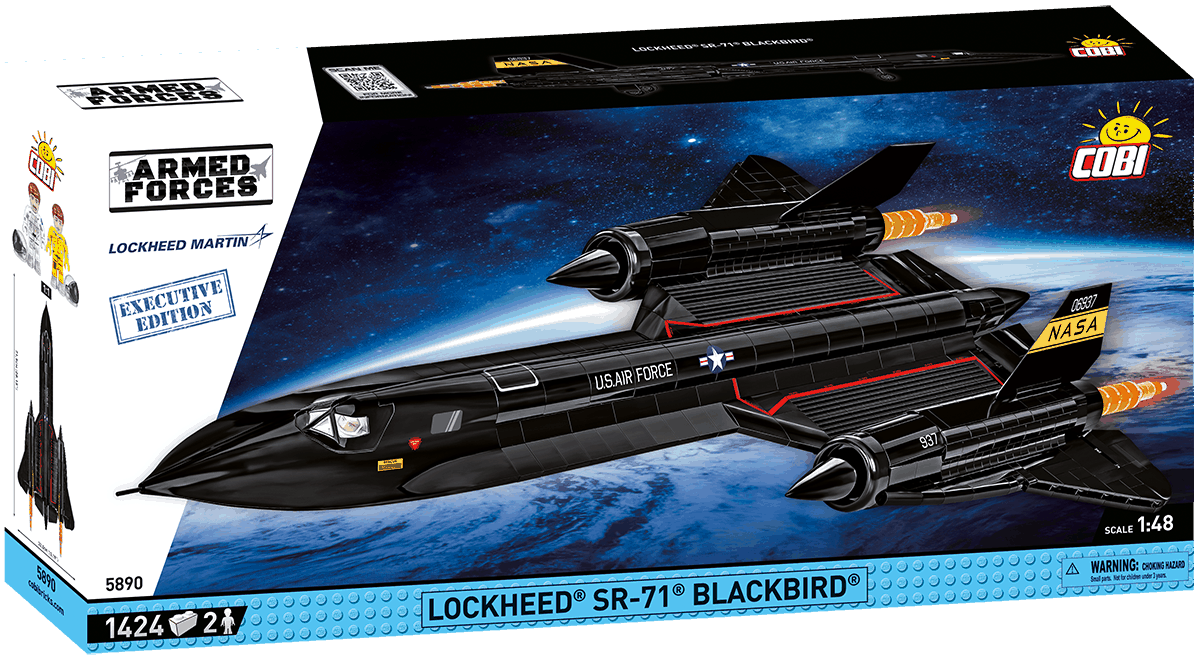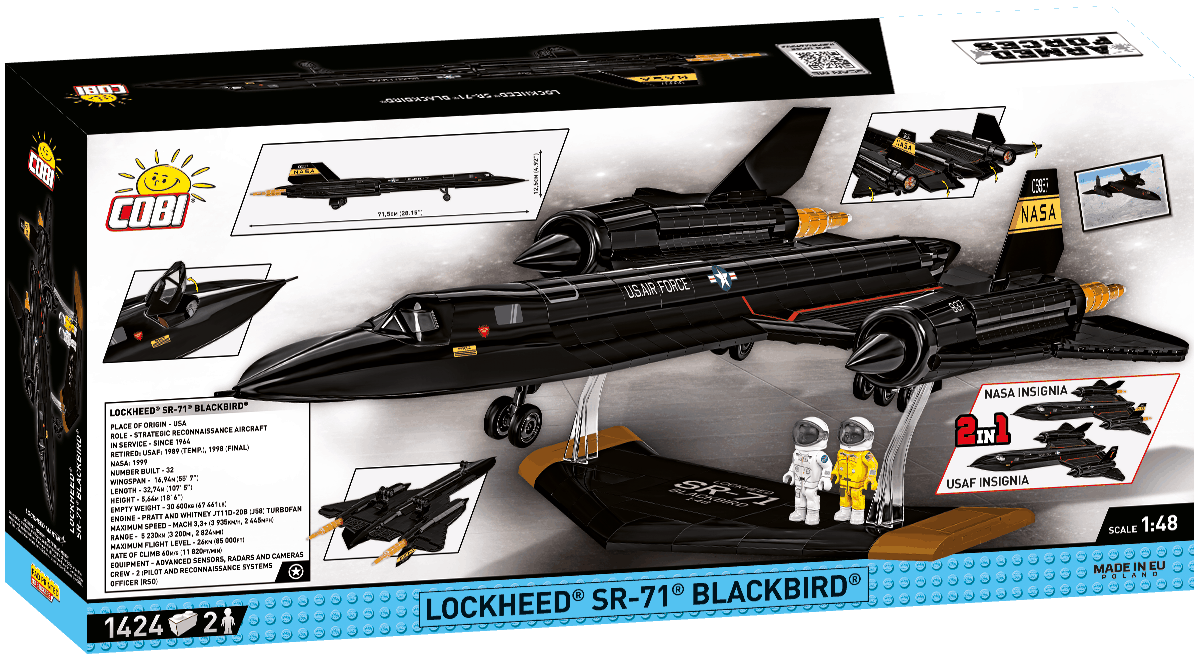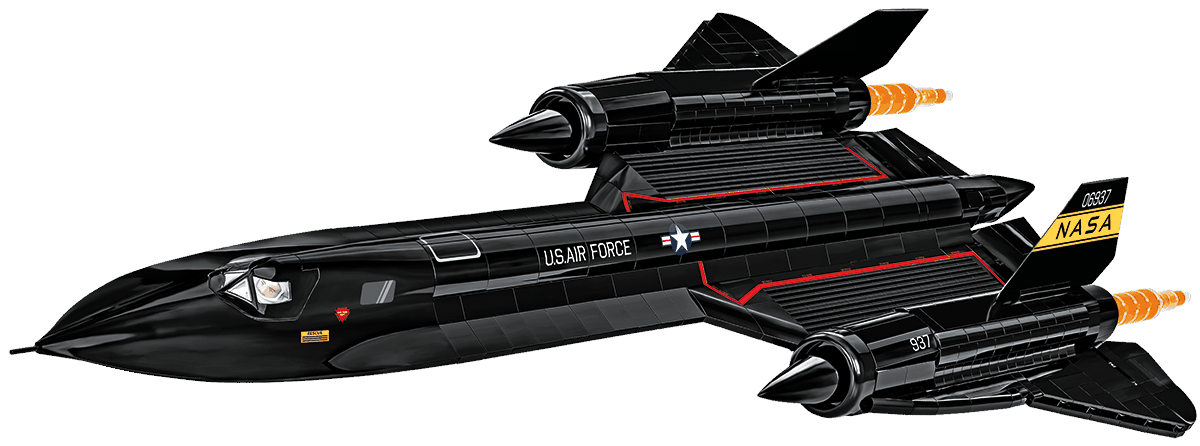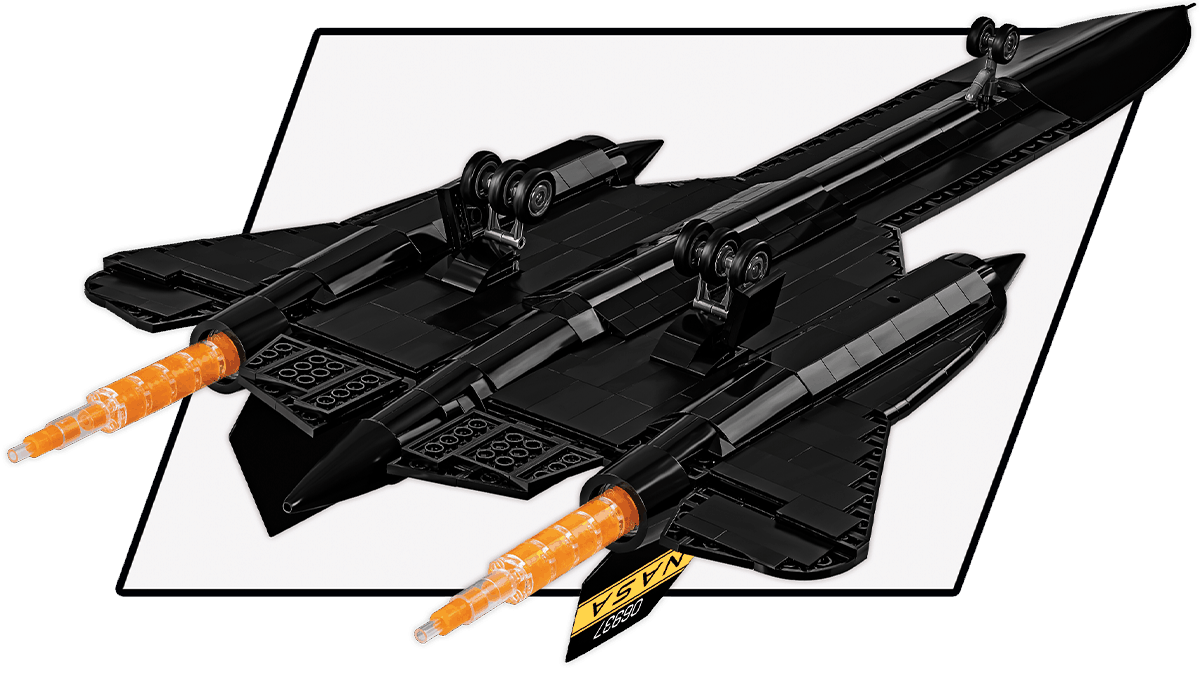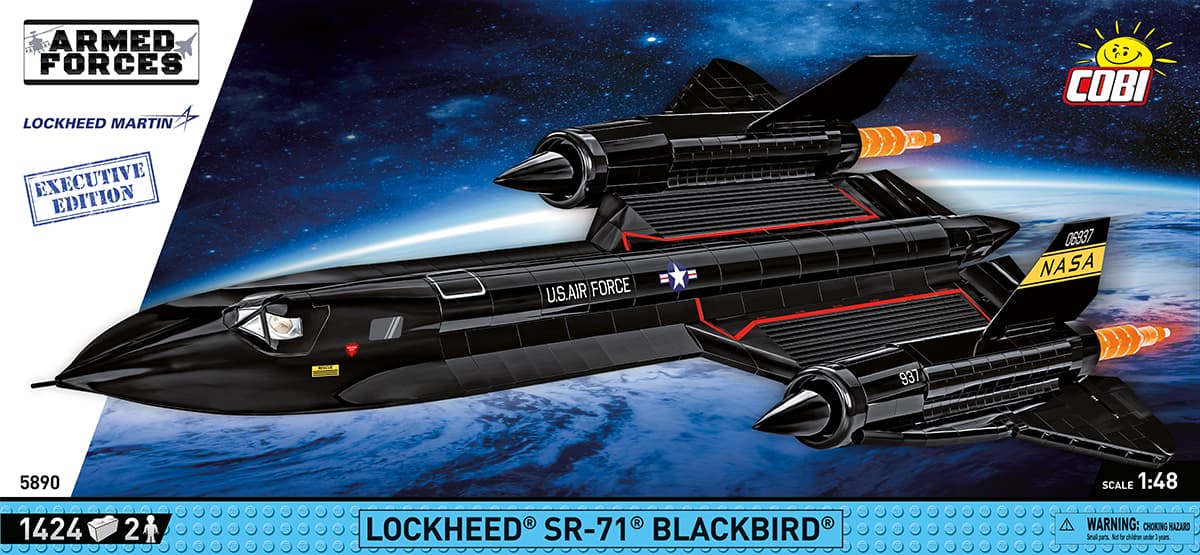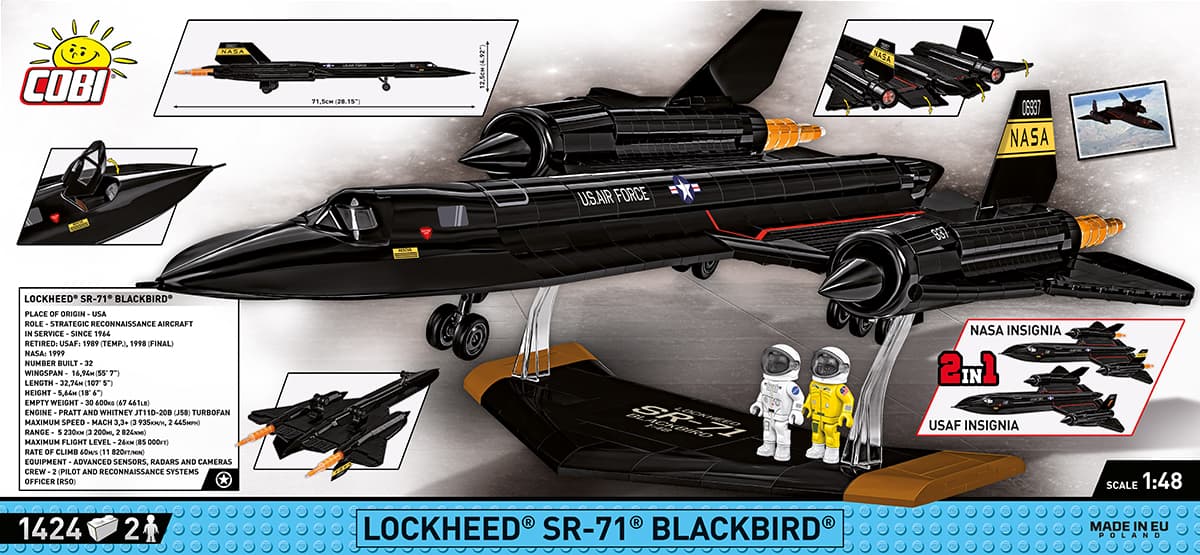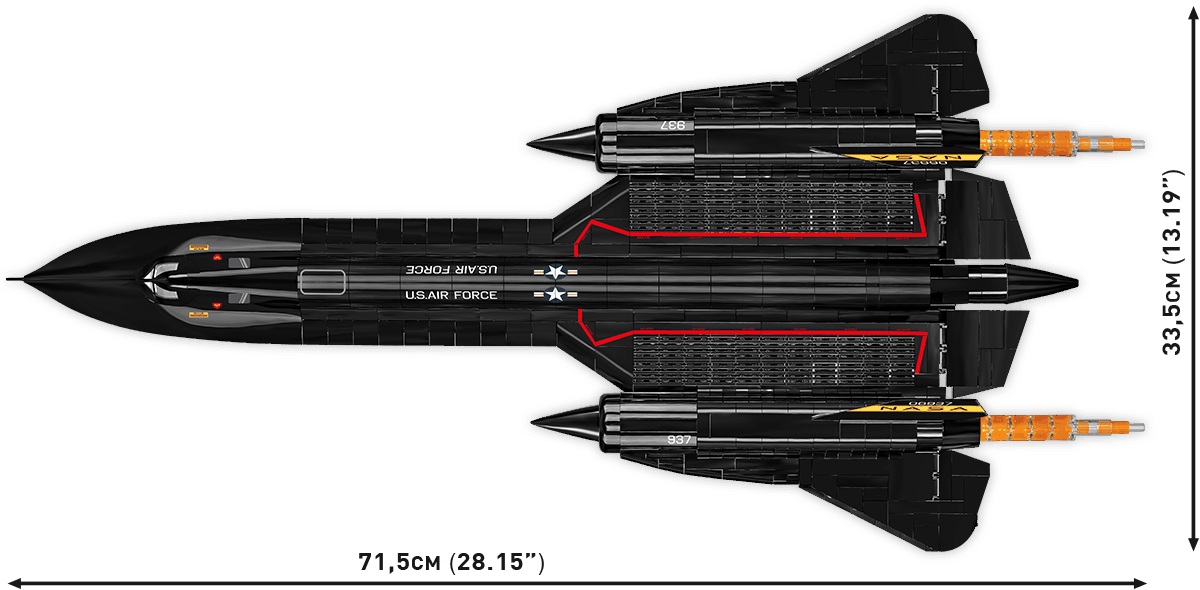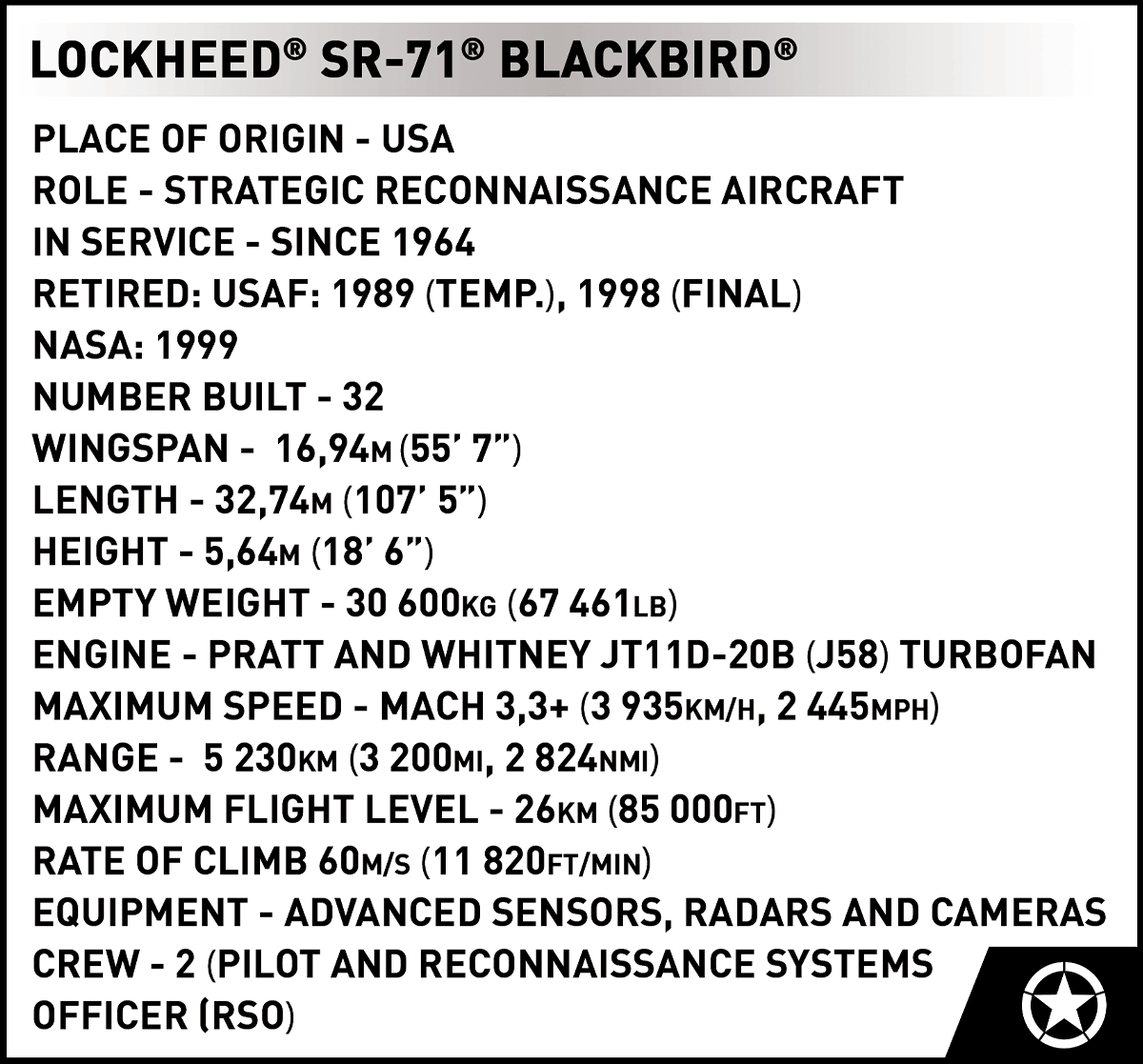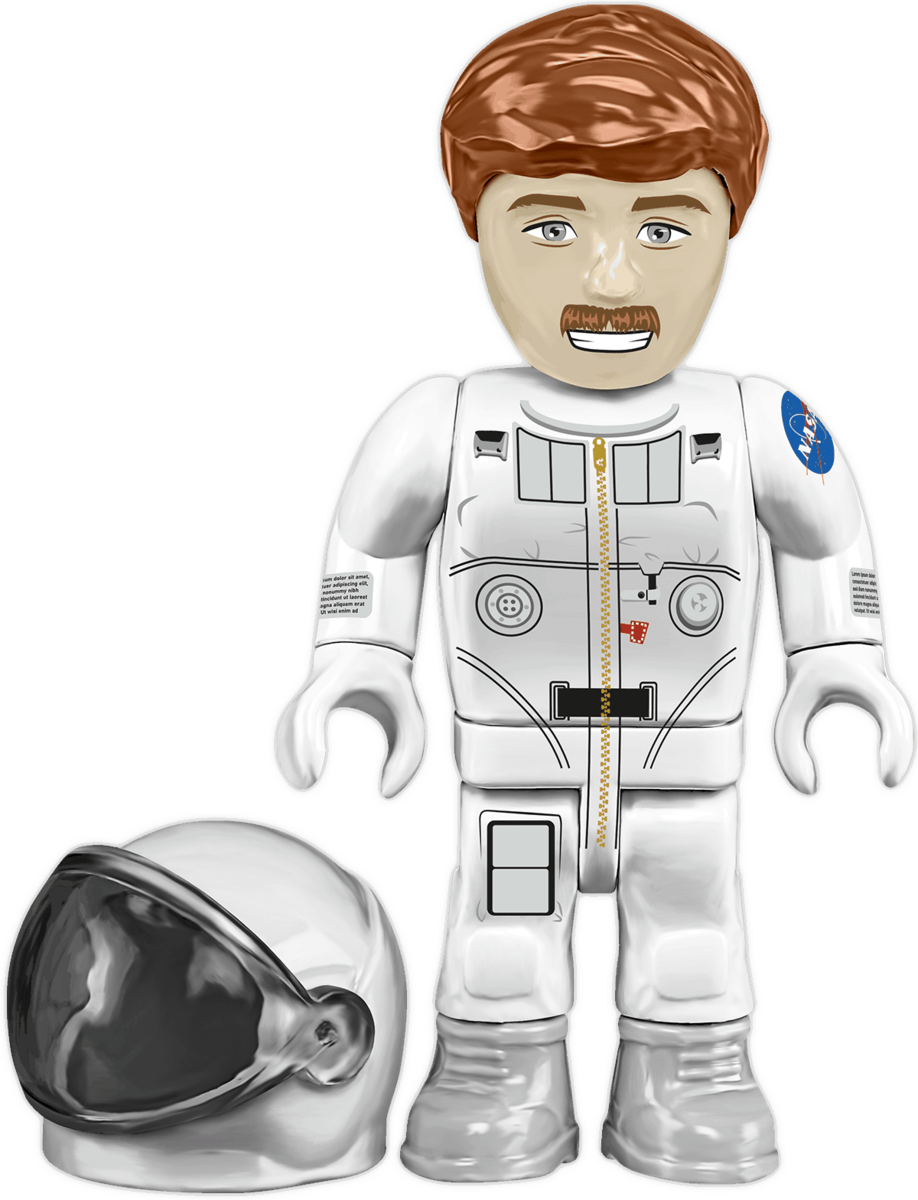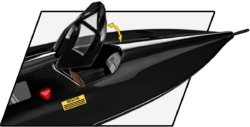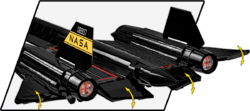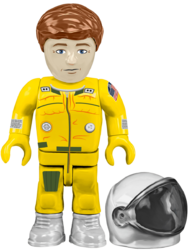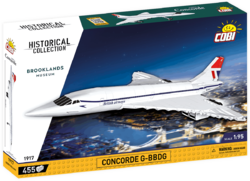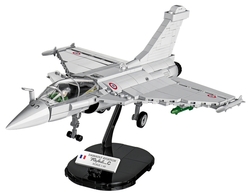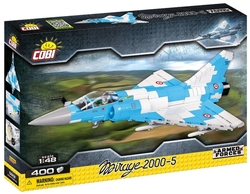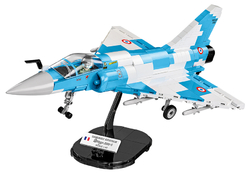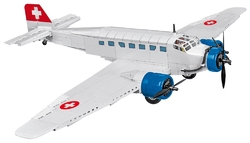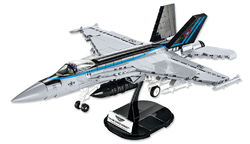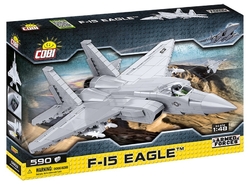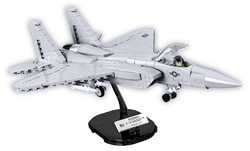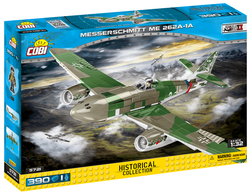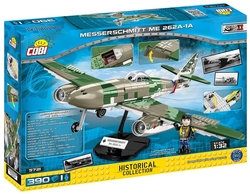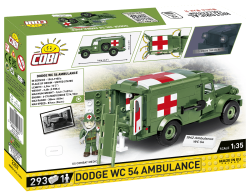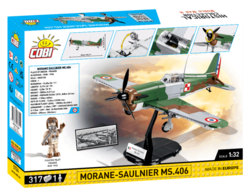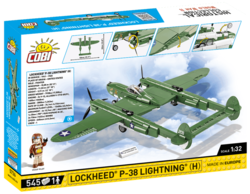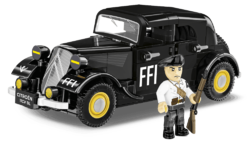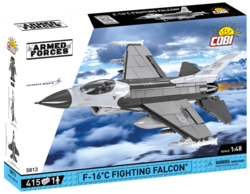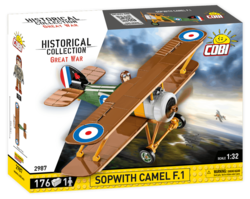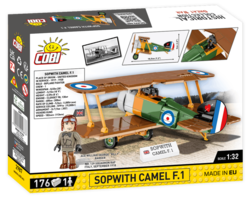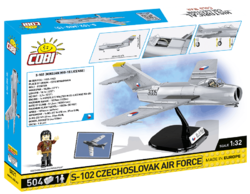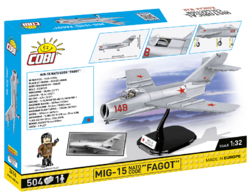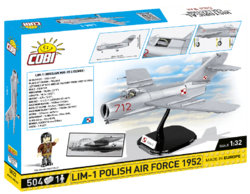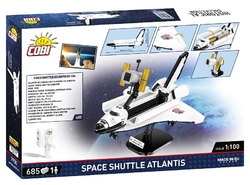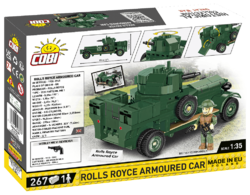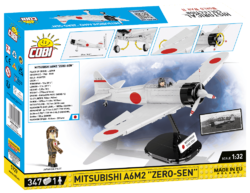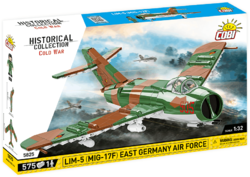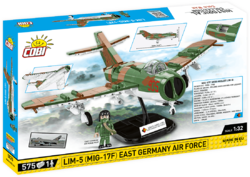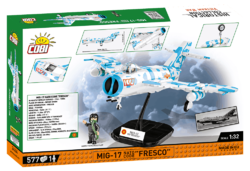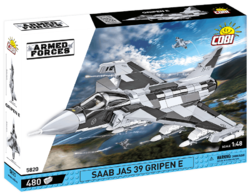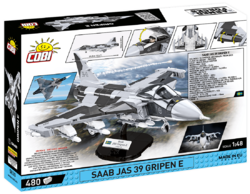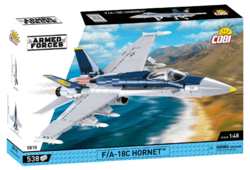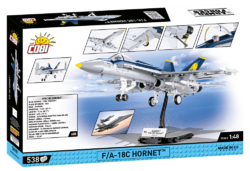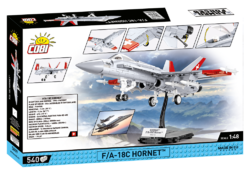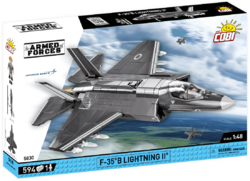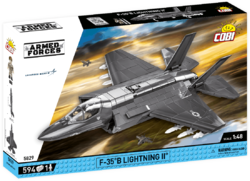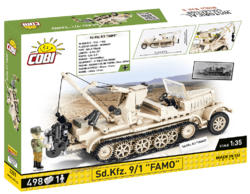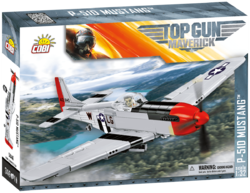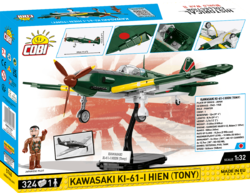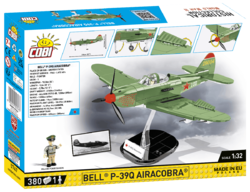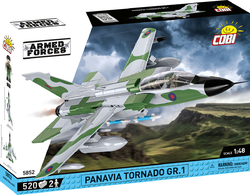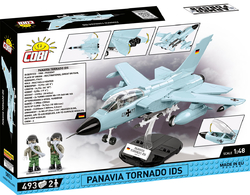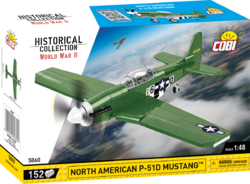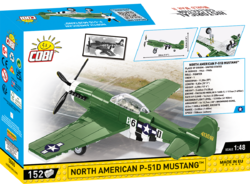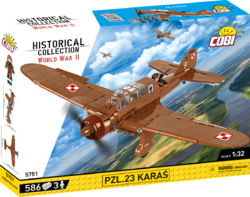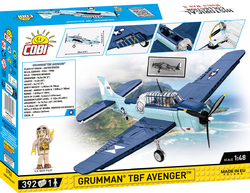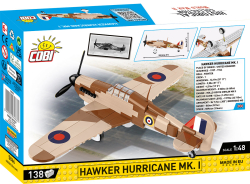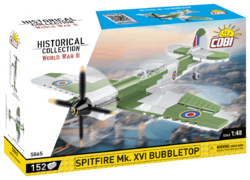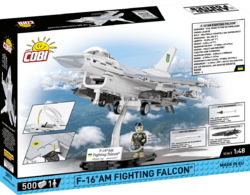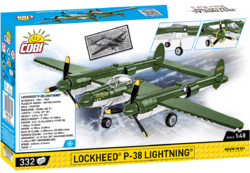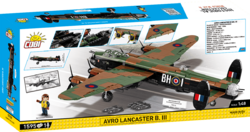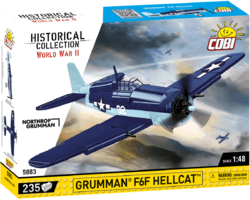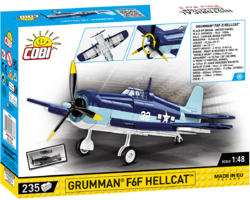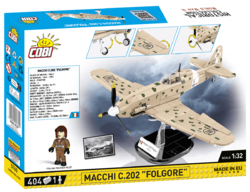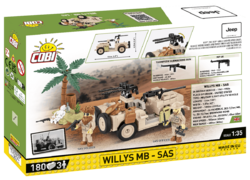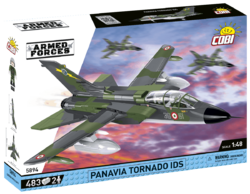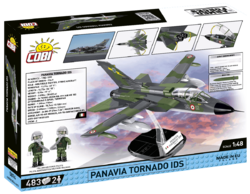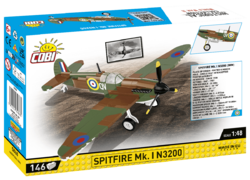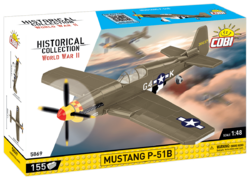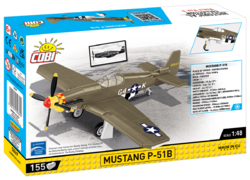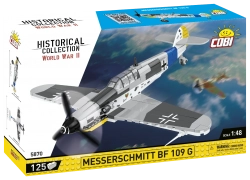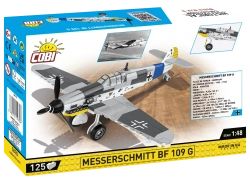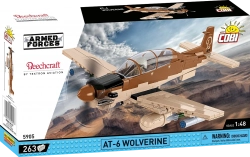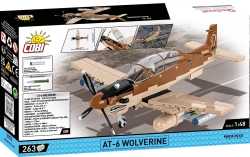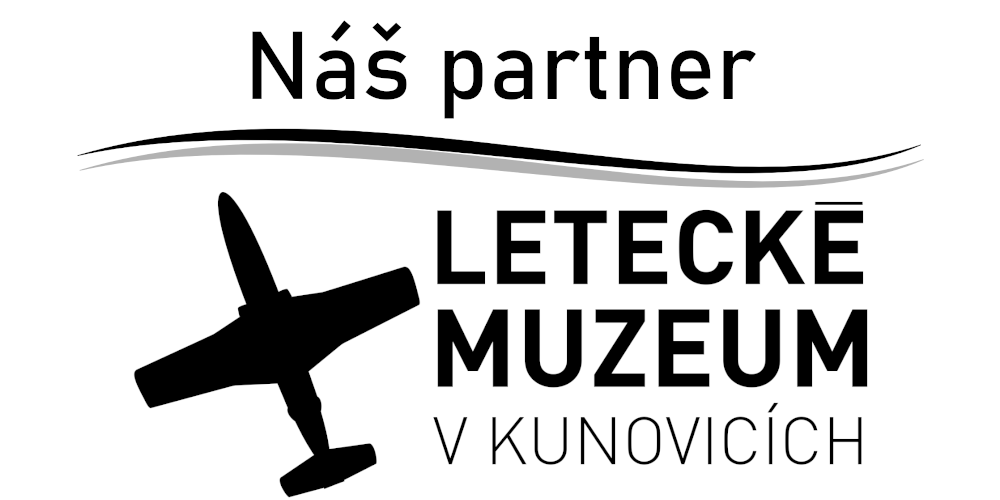
náměstí Hrdinů 109, 68603 Staré Město, Česká republika
American strategic reconnaissance aircraft Lockheed SR-71 Blackbird COBI 5890 - Executive Edition Armed Forces 1:48
| List Number: | COBI-5890 |
| EAN: | 5902251058906 |
| Warranty: | 24 months |
| Manufacturer: | COBI |
| Loyalty Points: | 16 |
| Price excluding VAT: | 315,15 zł |

You know that: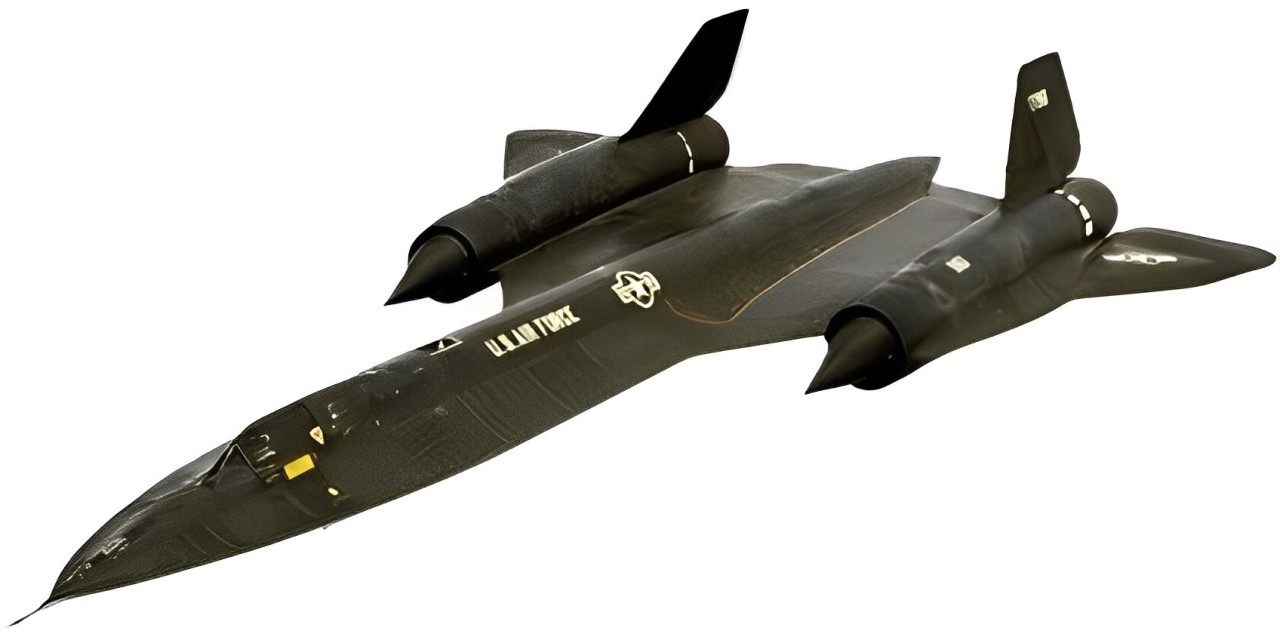
- Design work on the A-12 prototype began already in the 1960s under the leadership of the brilliant designer Clarence "Kelly" Johnson.
- When the United States was developing the Blackbird aircraft in strict secrecy, the Russians had no idea that the titanium needed to make the airframe was being purchased in Russia through the CIA.
- Everything about the development and construction of the prototype was subject to the strictest secrecy so that the advanced technologies did not get into the hands of the then Soviet Union.
- However, despite all the secrecy, the comrades in Moscow suspected that the US was working on a new modern reconnaissance aircraft. One photo from space sparked this suspicion.
- When the already completed prototype was being tested for radar reflectivity, Skunk Works employees placed the aircraft on a 15 m high pole so that the machine could be targeted and tested by radars. Because a Russian spy satellite regularly flew over the Burbank base in California, the plane was always dismantled from the pole in time and hidden in the hangar. So the Russian satellite photographed only that column, but with one small detail. Radar testing took several weeks, with the aircraft casting a shadow during the day and the California sun gradually burning the outline of the Blackbird into the grass. When the photos reached the commanders of Russian espionage, the discovery caused real consternation behind the walls of the Kremlin. As far back as 1967, the Soviets, in one of their espionage theories, believed that the technology for the development of the aircraft had been provided to the United States by an extraterrestrial civilization.
- The first flight took place on January 25, 1962.
- The aircraft was designed to be able to operate at an altitude of 25 km completely out of range of any anti-aircraft defenses. The titanium construction was able to withstand temperatures of up to 300 °C and allowed a safe speed of up to 3,529 km/h. If the machine was threatened by a launched anti-aircraft missile at a lower altitude, it was enough to simply pull the throttle and the Blackbird rocket flew away.
- But not everything was perfect. The aircraft heated up due to air friction at high speeds, and thermal expansion lengthened the machine by up to 100 mm. Expansion joints were therefore created on the wings to compensate for this expansion. Therefore, the fuel tanks did not leak at normal temperatures, and fuel constantly leaked from the plane until the fuselage warmed up. This feature greatly shortened the radius of action.
- The original type number of the Blackbird was RS-71, but US President Johnson mistook the designation for SR-71 in a speech to the public, and the aircraft was left with that.
- The Blackbird set several world records during its active service. In 1976 he reached a height of 25,929 meters, during the following flight a speed of 3.29 Ma, and in 1974 he traveled the distance between New York and London in 1 hour and 55 minutes.
- A total of 32 units were produced. 12 units were destroyed during testing or as a result of accidents, but none were shot down.
- The last specimen was retired by the US Air Force on October 30, 1998.
Technical parameters:
- dimensions: wingspan 16,94 m, length 32,74 m, height 5,64 m
- empty weight 30 600 kg
- maximum take-off weight 78 000 kg
- power unit 2x Pratt & Whitney J58-1 jet engine each with thrust 144 kN
- maximum speed 3 995 km/h
- maximum flight level 25 900 m
- volume of fuel tanks 12,219 l
- range 4800 km
- climb rate 60 m/s
- main armament electronic warfare system, infrared sensors, high resolution scanning cameras
- crew 2
Pilot Gary "G" Power on the SR-71 mission:
"During the Cold War, I was sent on a mission to scan military equipment in the Soviet Union. On a quiet flight, I took all the required footage. When that was done, it was time to return and it was at this point that we noticed on the instruments that the Soviets were trying to target us. The Blackbird started jamming the signal with a shift so the Russians saw a small bouncing dot on their monitor that moved tens of kilometers in different directions every second. I can imagine their astonishment and despair. "
| Recommended age | 10+ |
|---|---|
| Version (series) | 10/2024 |
| Number of pieces | 1424 pcs |
| Package weight | 1765 g |
| Scale | 1:48 |
| Number of figurines | 2 pcs |
| Dimensions after assembly | 33,5 x 71,5 x 12,5 cm |
| Box dimensions | 60 x 27,5 x 10 cm |
| Collection | Armed Forces |
| Contains luminous blocks | No |
| Material | Plastic |
| Compatible with other brand of kits | Yes |
Other categories
Related items
+ Skvělá komunikace
Všechno proběhlo bez problémů.
+ Rychlost dodání
- Nic
Velmi rychlé dodání.Úplná spokojenost.
+ Velmi rychlé dodání

Ondřej Vašťák
náměstí Hrdinů 109,
68603 Staré Město,
Česká republika













We respect your privacy.
Cobishop.cz uses cookies that are necessary for the proper functioning of the website (essential cookies), to measure traffic (analytical cookies) and to personalize advertising (marketing cookies). In order to use cookies we need your kind consent. Thank you for helping us to improve our services. Click HERE for detailed information.








